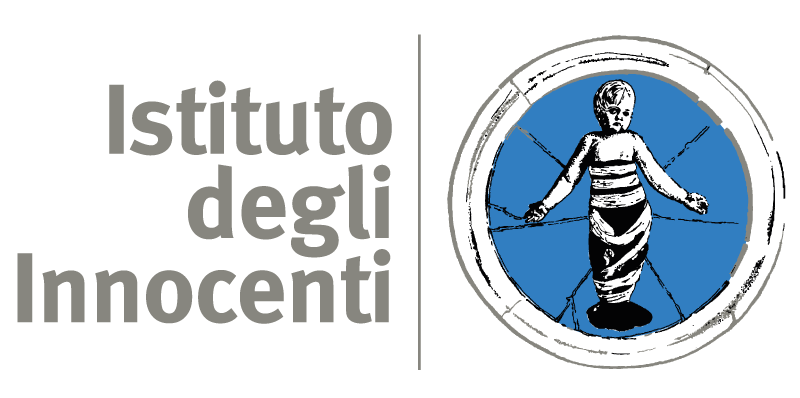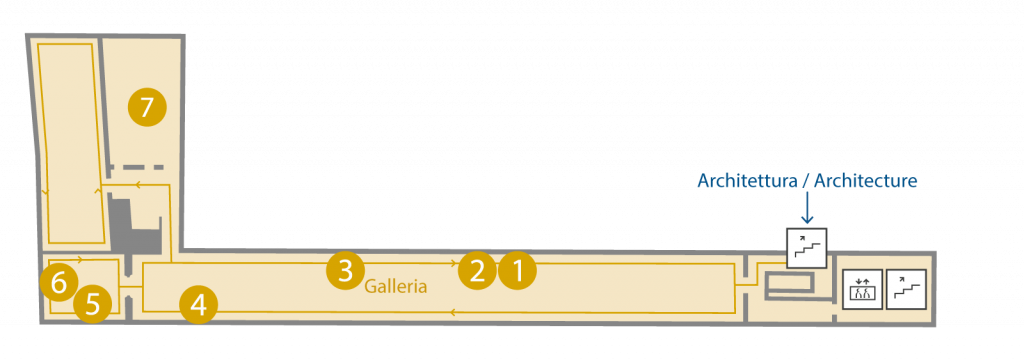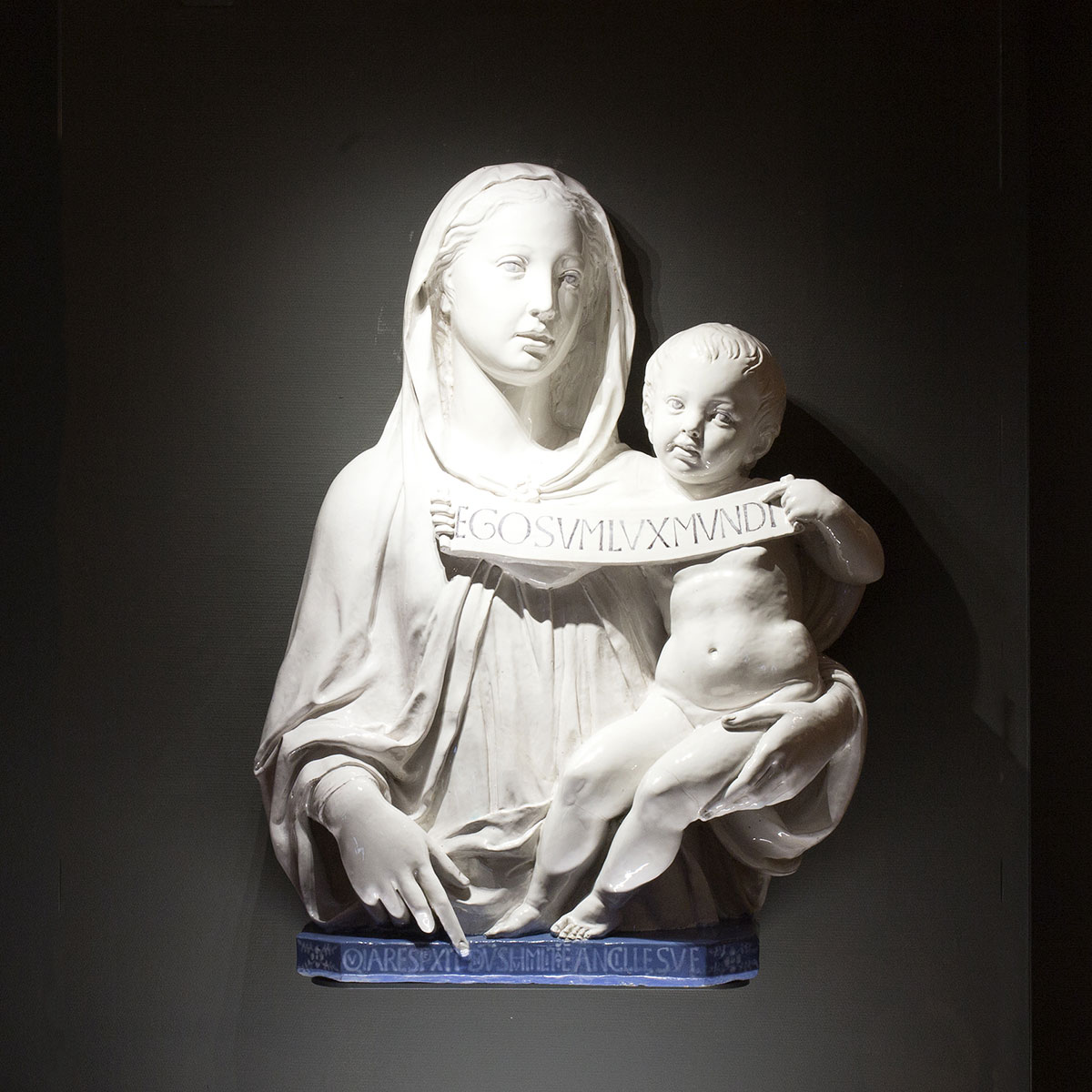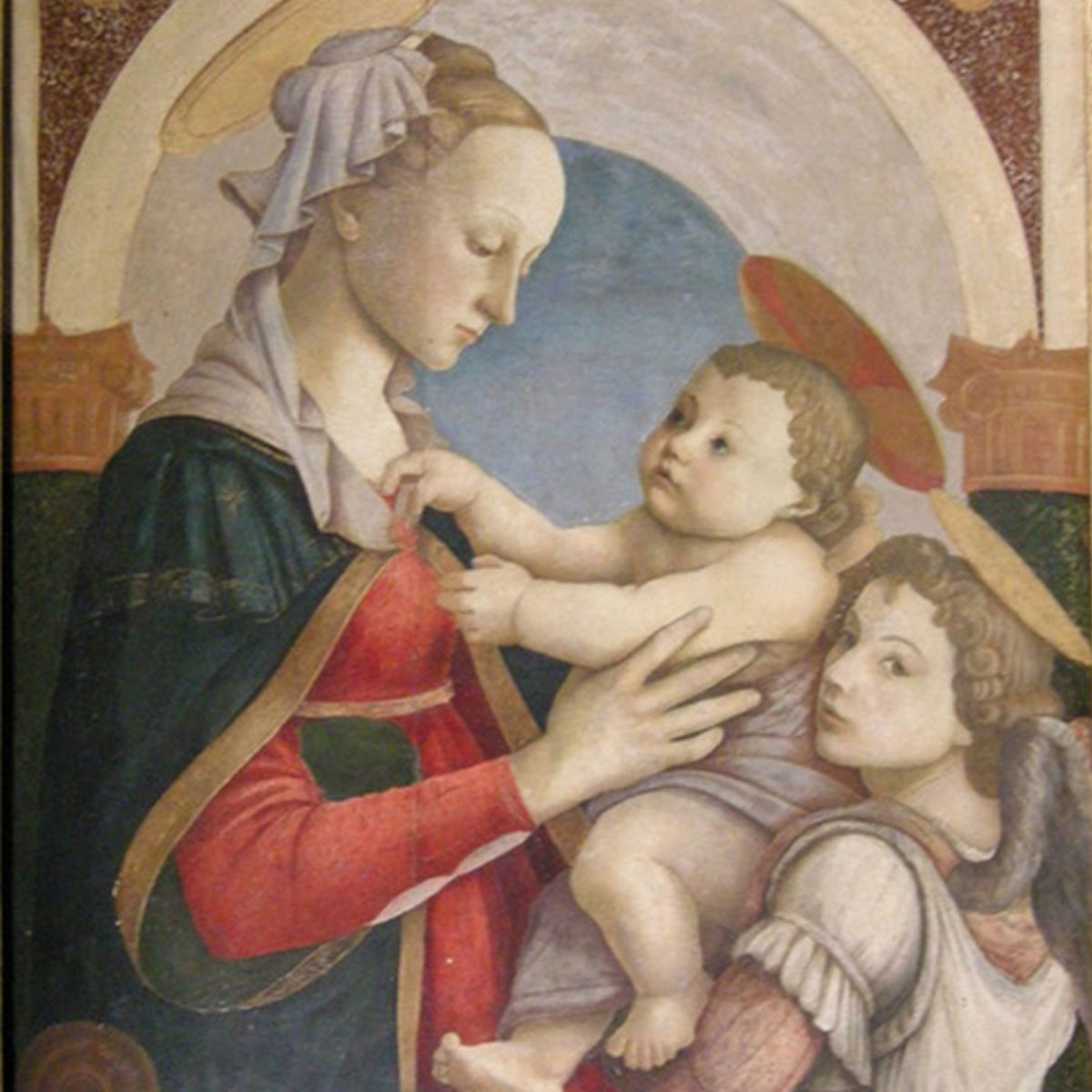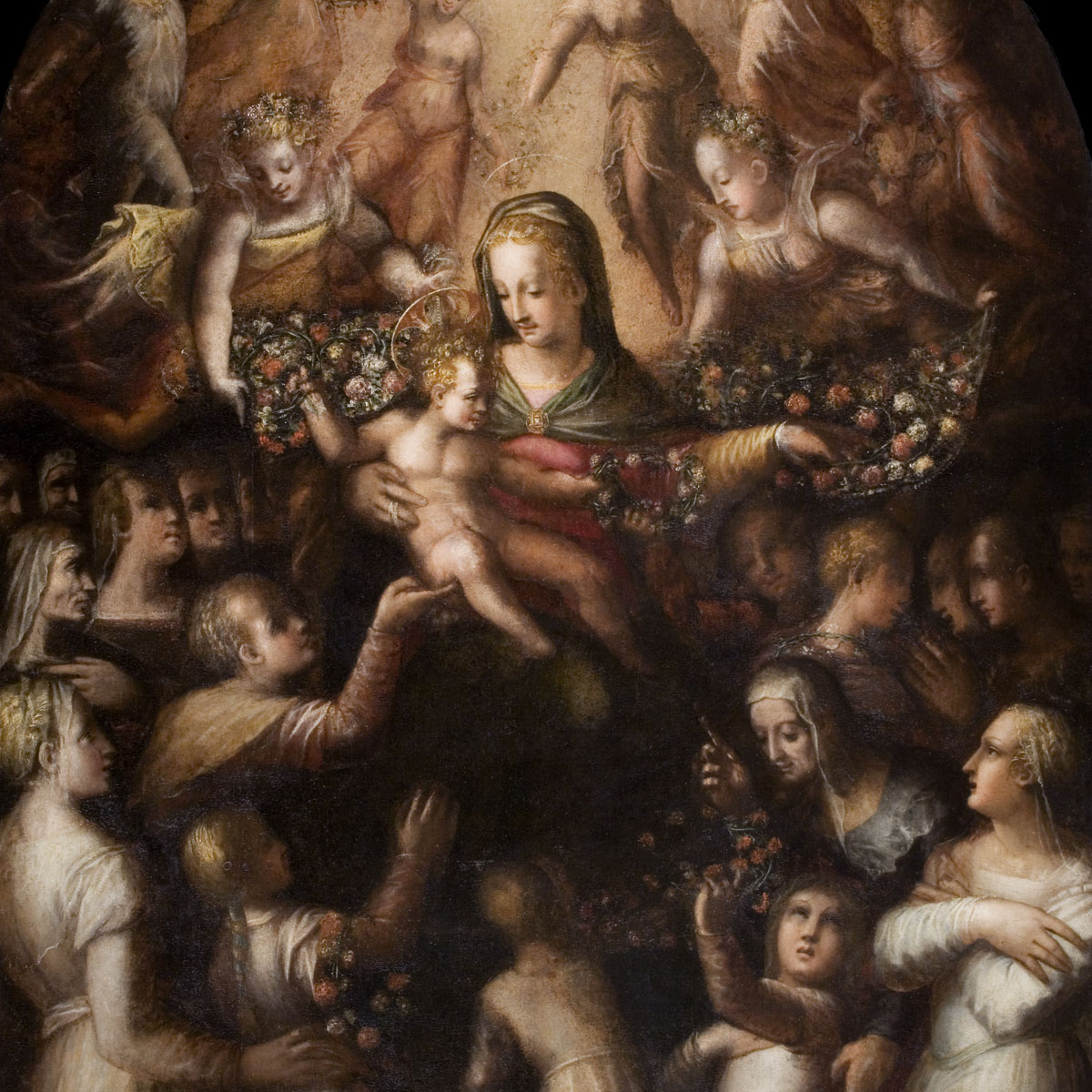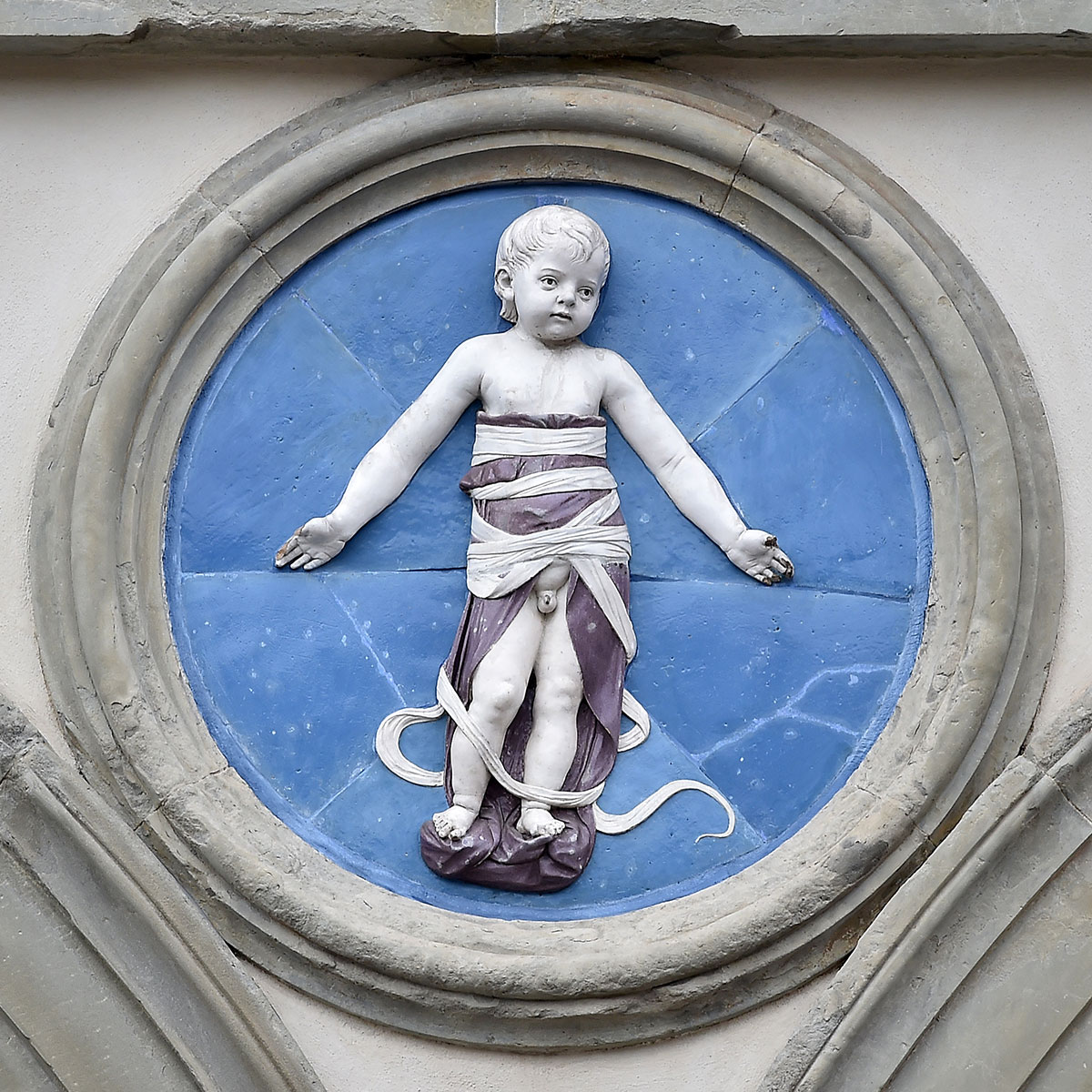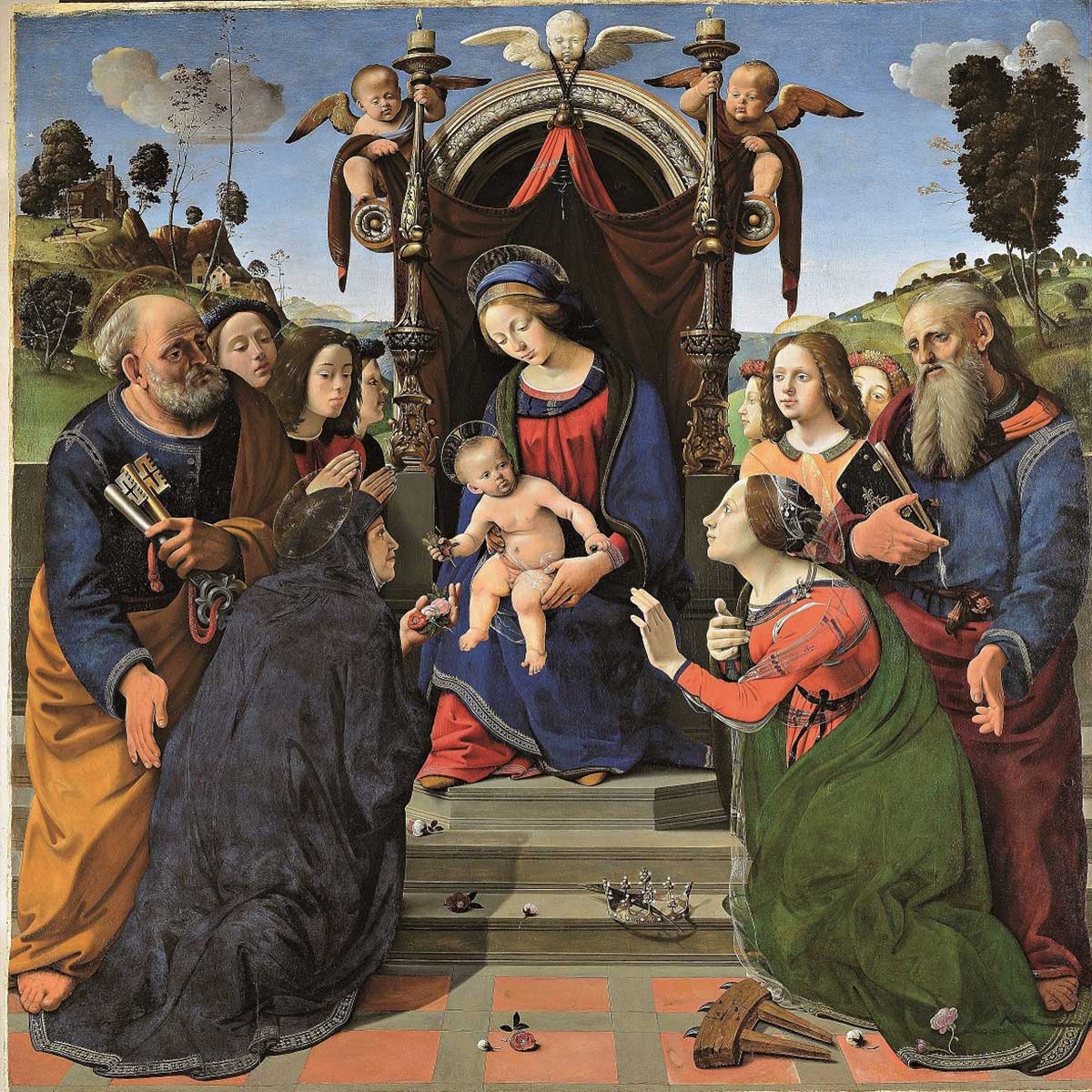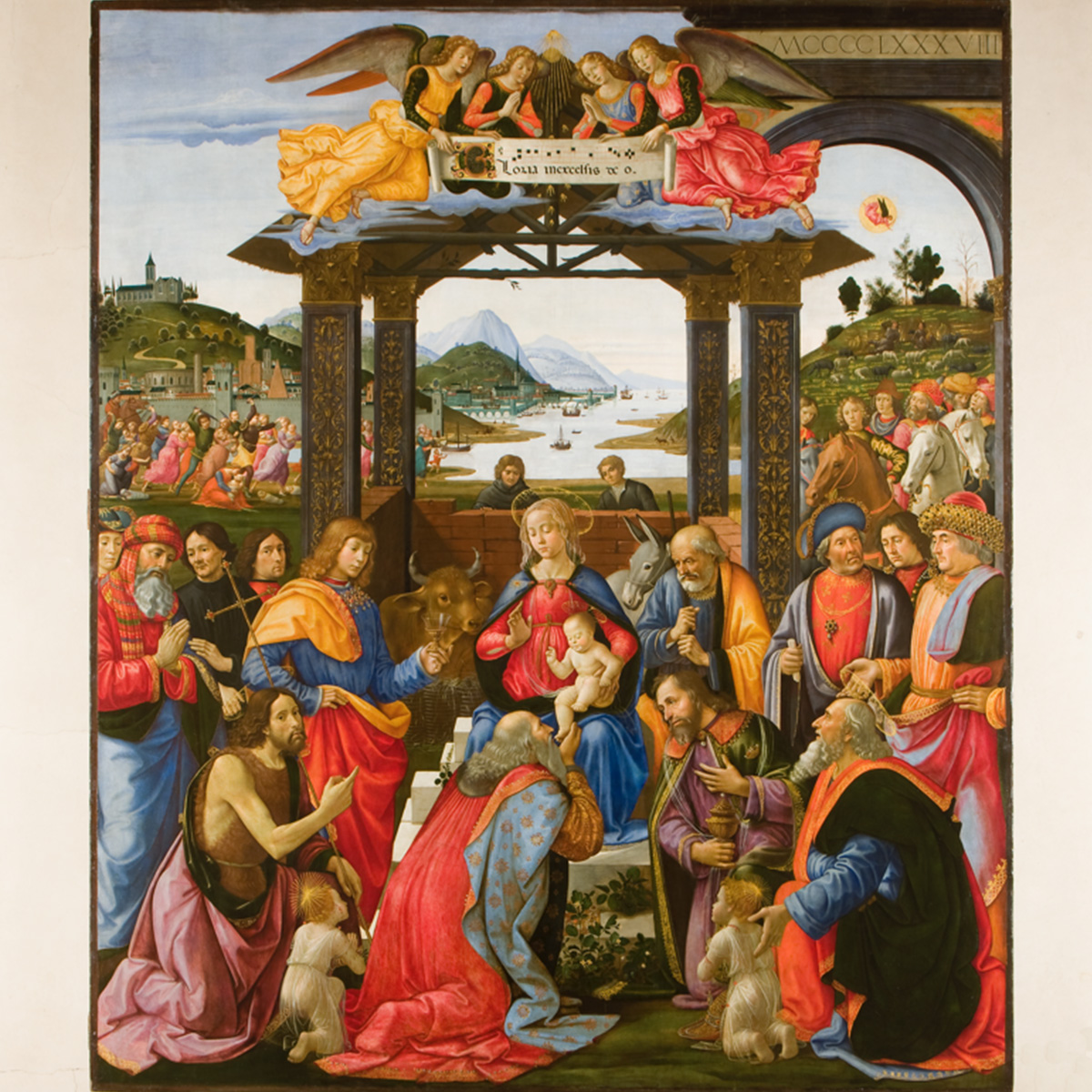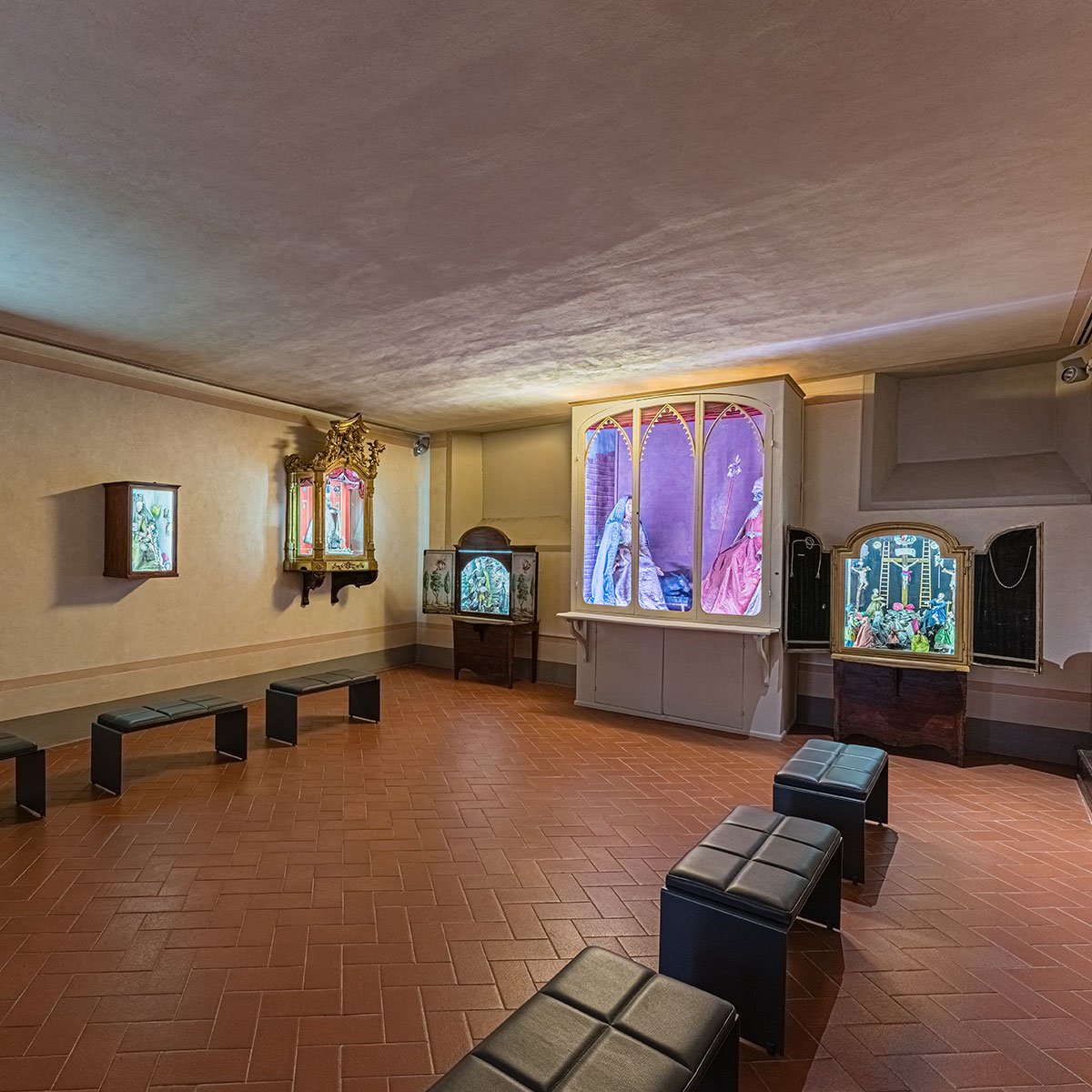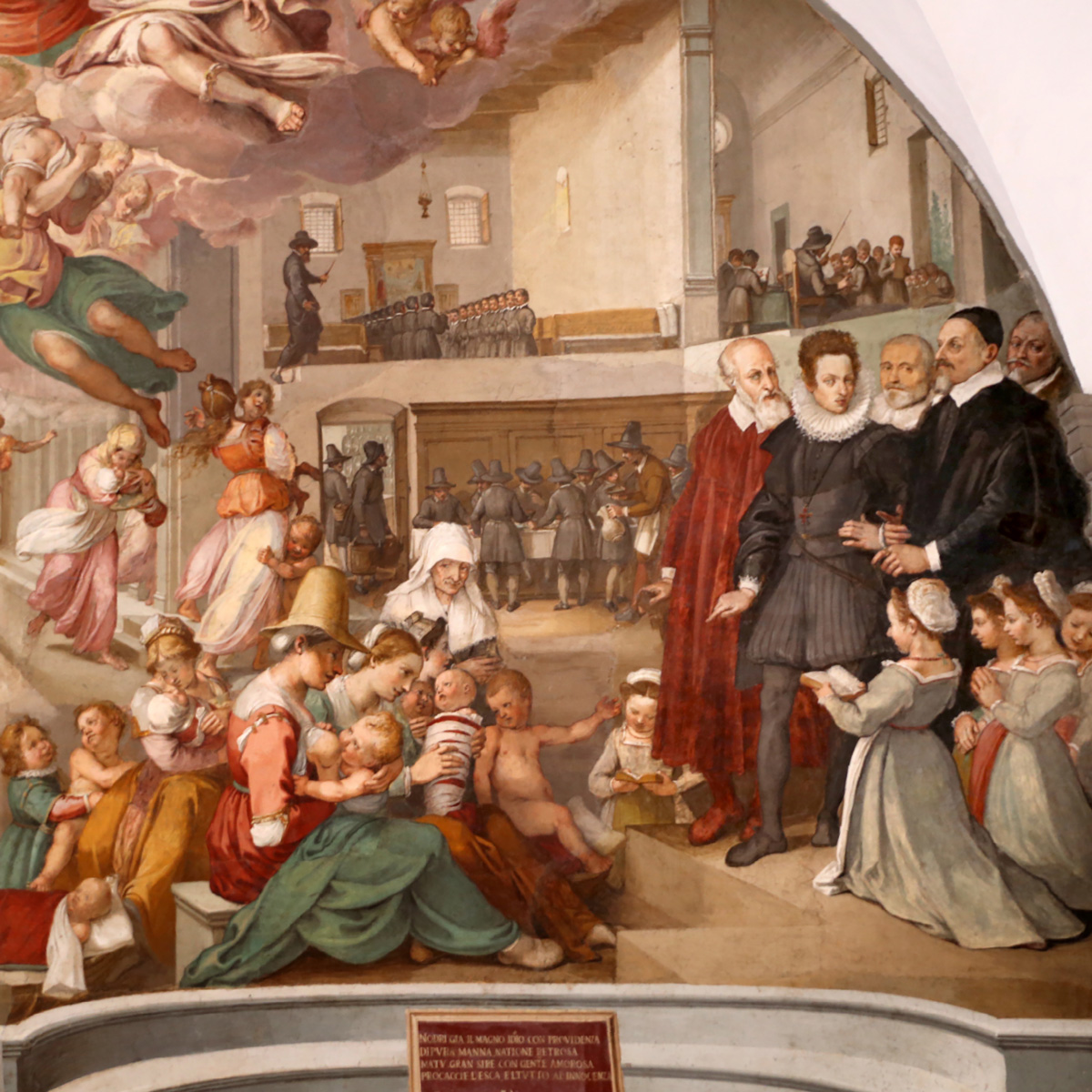- Home
- The Museum
- Your visit
- Column 2
- Opening hoursMon. to Fri.: 10 a.m. to 7 p.m. / Sat. and Sun.: 11 a.m. to 8 p.m.Where we arePiazza della SS. Annunziata, 13, 50121
- The Bottega dei ragazzi
- Caffè del Verone
- Conference Spaces
- Contacts

- Home
- The Museum
- Your visit
- Column 2
- Opening hoursMon. to Fri.: 10 a.m. to 7 p.m. / Sat. and Sun.: 11 a.m. to 8 p.m.Where we arePiazza della SS. Annunziata, 13, 50121
- The Bottega dei ragazzi
- Caffè del Verone
- Conference Spaces
- Contacts

Art Path
- Our Lady with the child
- Our Lady with the child and an angel
- Our Lady enthroned with the Child and angels, venerated by nocentine
- Putti in swaddling clothes
- Our lady enthroned with the Child and the saints Pietro, Giovanni Evangelista, Elisabetta d’Ungheria, Caterina d’Alessandria and angels
- Adoration of the Three Kings
- Choir
La collezione
The Museum’s gallery presents works of art that have a deep relationship with the history of the institution, directly commissioned by the Hospital, acquired through donations or following the amalgamation of other care institutions.
Built between 1436 and 1438 by Francesco Della Luna, the gallery above the entrance portico consists of a large room with a trussed roof, a room dedicated to the display of altarpieces from the church of Santa Maria degli Innocenti and from the Choir areas.
The collection contains a number of masterpieces by important artists, including Domenico Ghirlandaio, Luca and Andrea della Robbia, Sandro Botticelli and Piero di Cosimo, but also by artists who grew up at the Innocenti and were initiated into painting by Prior Vincenzo Borghini, such as Vincenzo Ulivieri, Giovan Battista Naldini and Francesco Morandini (known as Poppi).
The Choir houses a splendid collection of tabernacles and dressed sculptures linked to the devotional practices of the girls and women of the Innocenti.
Some works in detail
Our Lady and the Child
Luca della Robbia (c- 1445-1450)
Glazed terracotta; 76 × 58 cm
Admirably executed by Luca della Robbia, it was located in the small church of the women and is perhaps among the earliest works commissioned for the Innocenti. The glazed terracotta, an invention of the artist, gives the work an almost supernatural brilliance.
The Virgin Mary holds Jesus in her arms while pointing to a verse from the Magnificat, a song sung during Mary’s meeting with Elizabeth, in which reference is made to her being the Lord’s humble servant.
It is one of the few Gospel accounts of her voice that perhaps refers to the humble origins of the many girls who lived in the Hospital.
Our Lady with the Child and an Angel
Sandro Botticelli (c. 1465)
Tempera on panel; 69 × 64 cm
An early work by Sandro Botticelli, it was inspired by the famous Our Lady and the Child with Two Angels by Filippo Lippi, now in the Uffizi Galleries. Acquired by the Hospital in the mid-nineteenth century, it is one of the most significant pieces in the collection.
The Madonna is portrayed in the gesture of welcoming Jesus into her arms, supported by an angel whose gaze involves the spectator in the scene. Mary is thoughtful, as if she were aware of the fate of the Child, who instead seems carefree and busy holding out his hands to his mother. The scene is engaging and intimate and leads the viewer to notice only later that the perspective of the architecture in the background is slightly lower than that of the rest of the composition.
Our Lady Enthroned with the Child and Angels, worshipped by the Nocentines
Francesco Morandini known as “Il Poppi” (1565-1566)
Oil on panel; 177 × 117 cm
The panel depicts the Virgin surrounded by little girls, young women and elderly women, a clear reference to the hospital’s increasingly large female community.
The veiled figure in dark clothes could be the abbess who supervised the life of this section of the hospital. The floral wreaths could be a reference to the paper flowers made by the Nocentine, still kept in the tabernacles on display in the choir loft. It is recorded among the works by Poppi kept at the Innocenti in the section “where the women are” and probably with that “of the church of our women”, paid to Poppi by the Ospedale between March 1565 and 22 March 1567. This is the first known test by the artist, who was twenty years old at the time, commissioned by his patron Vincenzo Borghini.
Putti in Swaddling Clothes
Andrea della Robbia (1487)
Glazed terracotta; ø approx. 100 cm each
In 1487, the ten figures of the Putti in swaddling clothes were inserted in the oculi above the loggia on Filippo Brunelleschi’s façade. Two of these are on display in the gallery for conservation reasons, following the important restoration masterfully carried out by the Opificio delle Pietre dure between 2015 and 2016. Their presence in the collection allows the visitor to observe them up close, admire the finesse of their execution as well as their real size, which cannot be perceived from the square.
They are made using the glazed terracotta technique, which is ideal for weathering without being damaged. This is testified to by the fact that they have remained outside in good condition for over six centuries. Andrea depicts the putti with a serene gaze, some in the act of freeing themselves from their swaddling clothes. The white bodies of the children stand out against the cobalt blue background. The image of the swaddled cherubs has become the symbol of the hospital over time.
Our Lady Enthroned with the Child and Saints Peter, John the Evangelist, Elizabeth of Hungary (?), Catherine of Alexandria and angels
Piero di Cosimo (1493)
Tempera on panel; 203 × 198 cm
This is one of the most important works of the Innocenti, commissioned by Piero del Pugliese for the altar of the family chapel. The scene depicts a Holy Conversation, surrounded by wingless angels, and the Mystic Marriage of Saint Catherine.
The link with the Hospital is underlined by the presence of St. Peter, the patron saint of the patron, presenting an elderly saint, probably St. Elizabeth of Hungary, to whom the chapel was dedicated. St. John the Evangelist, patron of the Silk Art, presents St. Catherine of Alexandria in the act of receiving a ring from Jesus.
Adoration of the Three Kings
Domenico Ghirlandaio (1488-89)
Tempera and oil on wood; 285 × 240 cm
A work of extraordinary artistic and narrative value, it evokes much of the history of the Institution. The patrons are represented by Prior Francesco Tesori and by richly dressed figures, probably portraits of personalities from the Arte della Seta. The painter signs the work with his self-portrait.
Saint John the Baptist, the patron saint of Florence, and Saint John the Evangelist, the patron saint of Art, are kneeling in the scene, together with two young martyrs of the Massacre of the Innocents. The presence of men at work perhaps indicates the building of the hospital.
The Choir
In the 16th century, the growth of the women’s community led to the construction of a new raised room beyond today’s Via della Colonna to house the looms used by the young weavers. It was known as the ‘stanzone per la telaia da drappi’.
In the 17th century, the same room became the girls’ dormitory and then the nurses’ quarters. The nearby coretto was a protected place, dedicated to the women of the house who did not have access to the main church and allowed them to follow the Holy Mass from above without being the object of prying eyes from the male community.
History of the Innocents
Bernardino Poccetti (1610)
Fresco, 700×460 cm
The large fresco is not part of the museum itinerary and is located in the ancient Refectory of Women, now called Salone Poccetti. Today it can be seen digitally in the Historic Route through a large monitor that allows you to view its details. Executed for the Hospital by Bernardino Poccetti, it represents a glimpse of the scenes of life at the Innocenti.
The interiors house the nannies, boys and girls of various ages at different times of the day. The children saved by the Ospedale degli Innocenti are compared to those in the Massacre which, according to the Gospel narrative, was ordered by Herod.
Contact
Opening hours
From Mon. to Fri.: 10:00 AM to 7:00 PM / Sat. and Sun.: 11:00 AM to 8:00 PM
Museo degli Innocenti © 2023. All Rights Reserved
Team Redazione / Comunicazione ThePlusPlanet By Cristoforo SC: Dott.ssa Stefania Cottiglia
Designed by Sinaptic
